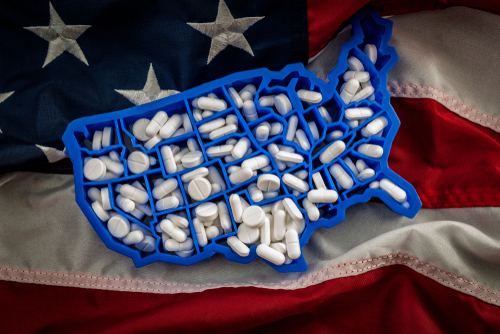
In a bid to improve Department of Homeland Security (DHS) detection and interdiction capabilities for illicit drugs and their precursor chemicals, U.S. Sens. Gary Peters (D-MI) and Josh Hawley (R-MO) reintroduced the Enhancing DHS Drug Seizures Act last week.
Although the legislation was introduced last Congress and advanced in the Senate, it did not move further. The bill aimed, then and now, to make DHS develop a plan for stronger public-private partnerships with the shipping, chemical, and pharmaceutical industries that would allow it to move quicker and more efficiently on drug seizures. These efforts would utilize improved data collection and analysis to see them done.
“Fentanyl and other dangerous drugs continue to wreak havoc on our communities in Michigan and across the country. The federal government must work to reduce the supply of these drugs to help prevent overdoses and save lives,” Peters, chairman of the Senate Homeland Security and Governmental Affairs Committee, said. “This commonsense, bipartisan bill will help make sure that the Department of Homeland Security uses every tool at their disposal to fight back against trafficking and seize these deadly drugs before they can harm Americans.”
Beyond the new tools and focus, the bill would also increase penalties for drug traffickers caught willfully surveilling, tracking, monitoring, or transmitting information about the location and movements of federal, state, or Tribal law enforcement officials. Punishments would also rise for those who destroy border technology in support of smuggling drugs into the country.
“Illicit drugs such as fentanyl are devastating communities and families across the country, including those in Missouri,” Hawley said. “In order to crack down on drug cartels and criminals operating across our southern border, we need to give the Department of Homeland Security the right tools and resources to root out drug smuggling and improve interdiction efforts.”
According to the Centers for Disease Control and Prevention (CDC), overdose deaths in the U.S. reached more than 100,000 over a year-long period ending in April 2021. Provisional data from the National Vital Statistics System put reported deaths at more than 103,000 in November 2022 based on a 12-month ending period, although this data was dinged as underreported by the agency, with predicted deaths expected to be as high as 108,712.




